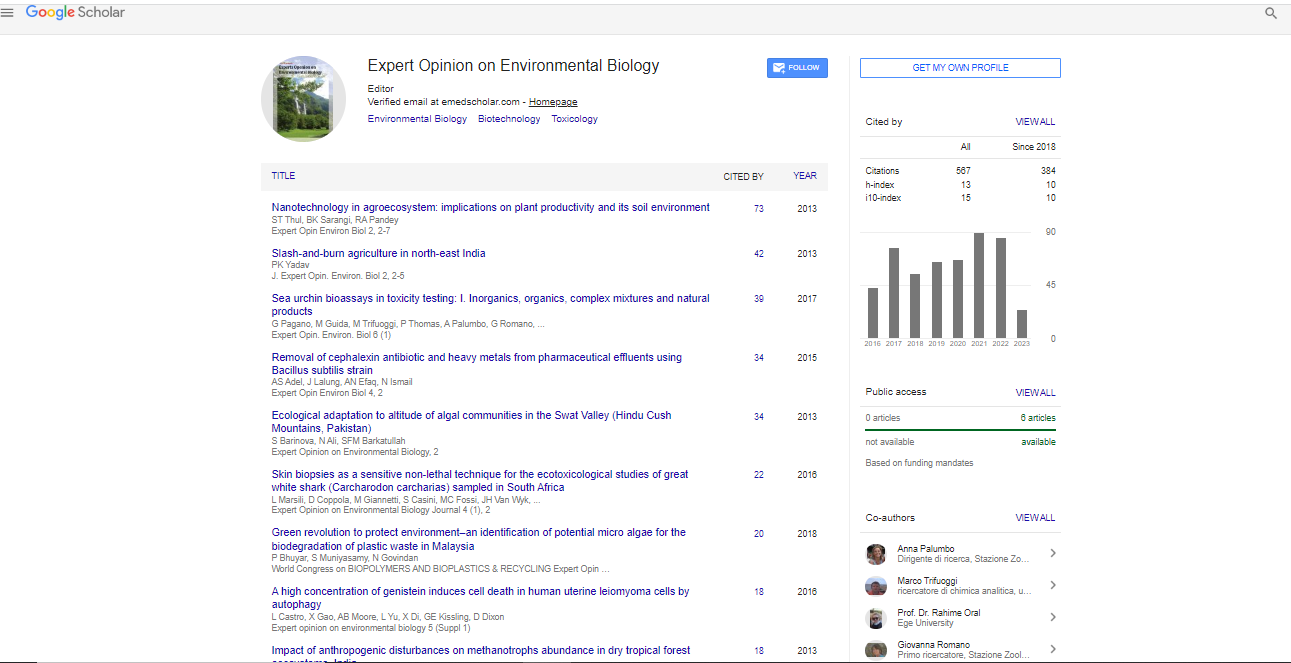Similarity and Finite Difference Solution on Biomagnetic Flow and Heat Transfer of Blood-Fe3O4 through a Thin Needle
Abdulaziz Alsenafi
Department of Mathematics, Kuwait University, Kuwait
: Expert Opin Environ Biol
Abstract
A magnetic fluid is composed of a base fluid and magnetic particles, where magnetic particles are carefully distraught in the base fluid. Here, we will assume that blood is the base fluid that exhibits electrical conductivity and polarization properties and Fe3O4 as magnetic particles. The addition of Fe3O4 into the blood can remarkably ameliorate the properties of the blood’s thermal conductivity. Such physical aspects can play a vital role in biomedical and bioengineering. The presented model studies the biomagnetic fluid flow, such as blood that contains magnetic particles through a thin needle in the appearance of a strong magnetic dipole. First, the governing equations are transformed using similarity transformation into a system of dimensional differential equations, which are then non-dimensionalized. The system of non-dimensional equations and then solved numerically using a finite difference method. By analyzing the results, we find that the axial flow decreases for the ferromagnetic number, magnetic field number, and Eckert number, while the temperature increases with volume fraction, where the size of the needle plays a significant role. Finally, the results also indicate that the presence of ferromagnetism significantly influences the skin friction coefficient. Our presented results will also be compared with existing literature that is similar to our work.
Biography
Abdulaziz Alsenafi is an associate professor of mathematics at Kuwait University. He obtained his bachelor degree from Kuwait University in the year 2009. Furthermore, he obtained his master and doctor of philosophy from Case Western Reserve University at 2013 and 2016, respectively. His current research interests are in the field of applied mathematics in general and in the areas of Modeling, Scientific Computing, Differential Equations, and Fluid Dynamics.
 Spanish
Spanish  Chinese
Chinese  Russian
Russian  German
German  French
French  Japanese
Japanese  Portuguese
Portuguese  Hindi
Hindi 
